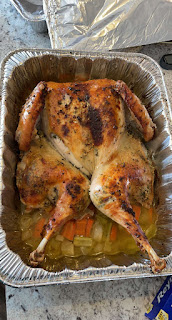I really have my family to thank for my relationship with food. Grandma Mary grew up in Clinton, North Carolina and spent most of her days helping her family with the work done in the fields and tending to animals like pigs. She spent many days in the hot sun doing anything from cropping tobacco, pulling corn, or down on her hands and knees picking cucumbers. Thankfully, momma did not grow up this way and neither did my brother and I. That being said, momma and grandma thought it was important for us boys to know our roots, so we spent many days of summer vacation picking, shelling, and putting away field peas, as well as shucking, silking and putting away fresh corn.
This is an example of traditional Native foodways. For our people, working together as a family unit to put away fresh vegetables in the summer is a bonding experience that is deeply rooted in or agricultural heritage. It may sound funny to others, but the fondest memories of my childhood are of the days when up to four generations of our family would gather together and work to get through bushels and bushels of valuable produce. It was nothing for us to spend full days talking and laughing as we shucked corn and shelled field peas. The end product? Pounds of delicious, fresh, nutritious vegetables, memories that last a lifetime, and a deep appreciation for all of the work that goes into growing and preparing the food we ate.
As you can see from last years Christmas turkey, I am no longer intimidated by these dishes. This was a 13 pound bird and thanks to my special preparation it was without a doubt the juiciest and most flavorful turkey I have ever had. I cut the spine out of the bird in a process known as spatchcocking, made a compound of garlic and fresh herbs and put that under the skin and on top as well. I cooked this turkey on a bed of aromatic vegetables, and I am proud to say that there were no leftovers.


Comments
Post a Comment